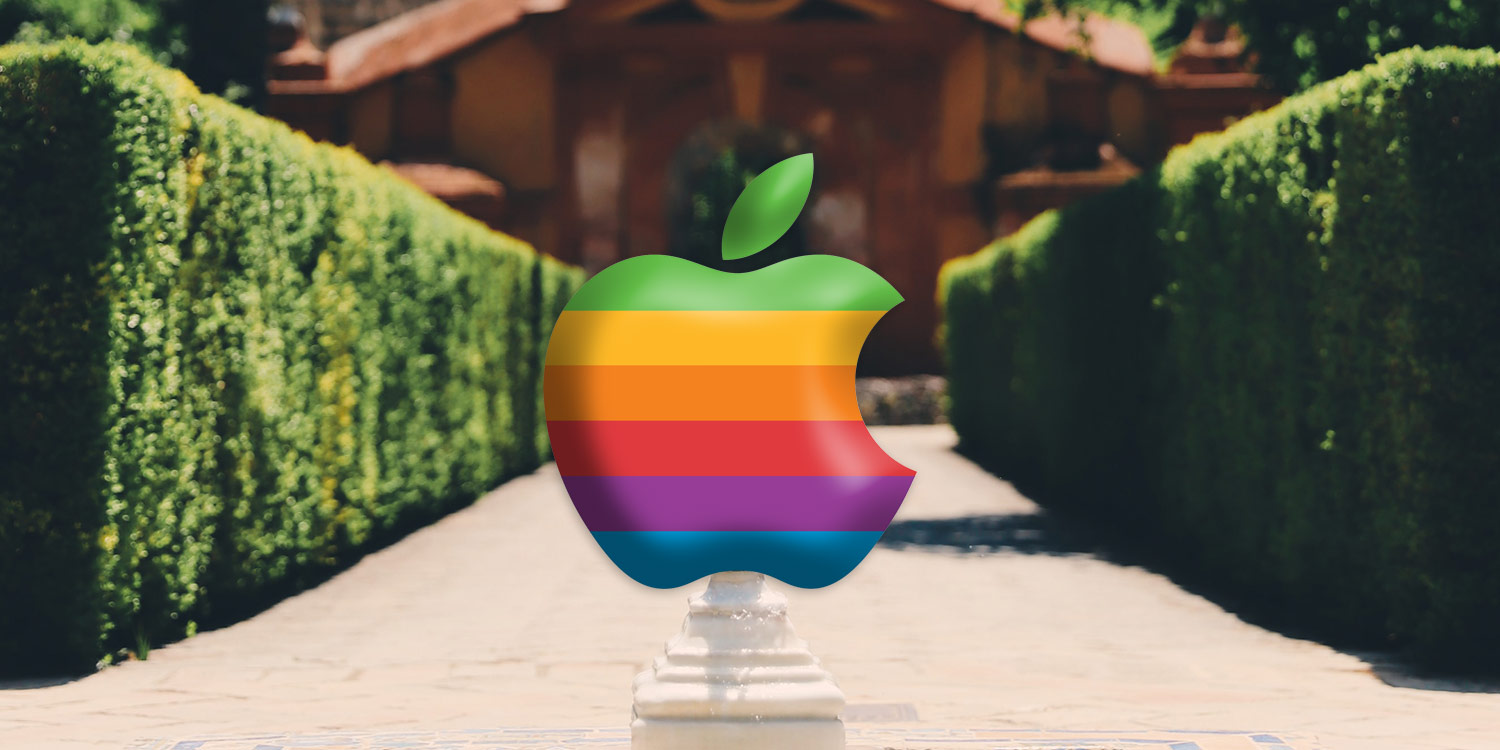For best results, please twin your iPhone with an Apple Watch. And an iPad. And a Mac. And some AirPods. And…
Every year, Apple runs its Worldwide Developers Conference – WWDC. Although primarily a means for app and game creators to get to grips with upcoming Apple technologies, WWDC has a keynote ‘for the rest of us.’ This consumer-friendly look at what’s coming up in Apple’s various operating systems (and, sometimes, hardware) provides an exciting glimpse into the future of your Apple gadgets.
What was interesting this year was how much the technology was framed as a means to an end. Apple was keen to push the idea that its products were about meaningful interactions with the world around you, rather than hard tech. iOS 15, said Apple, will help you stay connected, find focus, intelligently access answers, and explore the world.
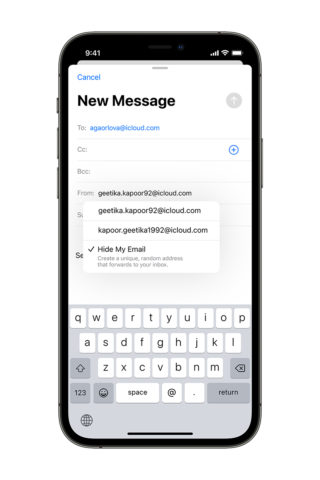
One of Apple’s new privacy features that you’ll only find on Apple hardware.
Broadly speaking, this line of thinking continued throughout, as Apple revealed imminent updates to iPadOS, watchOS, macOS, and Apple’s designs on health. Even the privacy section of the keynote – one of the most tech-oriented, complete with Very Serious Graphics – dug deep into the human aspect of Apple’s plans: how to stop people who’ve sent email knowing whether you’ve opened a message; exploring how often apps utilize permissions; and on-device Siri processing that addresses concerns about unwanted audio recording.
In short, this was a keynote that prized people over technology. But make no mistake: Apple still very much wants you to buy all of its technology!
World of Apple
You got this impression from the Apple strategy threaded throughout the entire WWDC keynote, where the company repeatedly emphasized the integrated nature of its ecosystem. The message was clear: go all-in with Apple and you get more. Buy additional Apple products and you get even more. And, ideally, try to get your friends to buy Apple products as well so you can all happily exist in a world that’s better than ones those people using Android and Windows languish in, unaware of the sunshine and roses in your comparatively blissful lives.
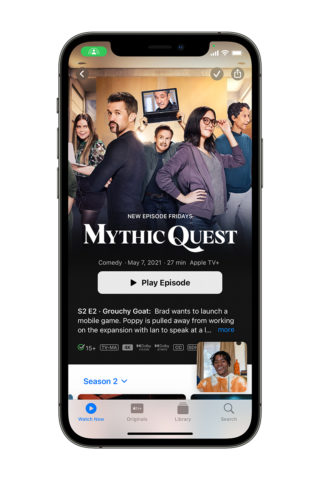
SharePlay effortlessly shares films and music with friends – as long as they use Apple kit.
OK, so that’s a touch hyperbolic and more than a little snarky, but let’s look at the evidence. For FaceTime, Apple is introducing SharePlay, an integrated system primarily designed for collaborative remote media experiences. What this means is you’ll be able to start a FaceTime call and enjoy with whoever you’re chatting to a fully in-sync song or album from Apple Music or a show from Apple TV+ (or a third-party service supporting the feature).
If you’ve Apple TV hardware, you’ll be able to send to it the media you’re listening to or watching, for a bigger-screen experience. But if a friend has an Android handset or a Windows PC, tough luck – they don’t get to join the party. The sole concession with FaceTime beyond Apple products that was made during the keynote was that you’ll soon be able to create and share a FaceTime meeting link, which users of non-Apple platforms will be able to join via an encrypted web browser session. But they won’t be able to start a call themselves, nor use SharePlay.
Feature packed
Moving on, Apple unveiled a raft of other features geared towards making your life better, in terms of productivity, working with content, or more broadly interacting with the world. Again, they’ll all require Apple hardware as a starting point and the benefits increase as you more heavily invest in the broader ecosystem.
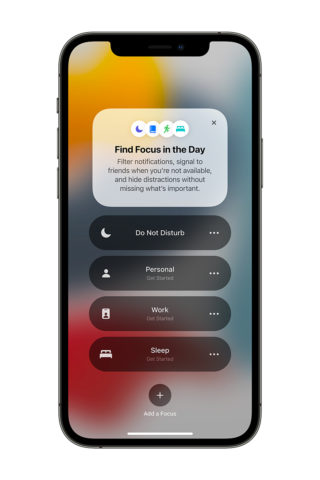
Focus! Unless you’re not using Apple products, in which case… whatever.
With Focus, you’ll be able to surface only the apps relevant to specific contexts, blocking irrelevant contacts and notifications as well. Apple’s operating systems will do this automatically, or you can create custom contexts that sync via iCloud – and that only work with Apple products. Live Text unlocks text within imagery, which can be accessed and utilized by the rest of the system, such as in Spotlight searches.
Apple wants Wallet to be your keys and AirPods Pro to boost conversations when you’re finding it hard to hear – the latter of which also needs your iPhone. Any paid tier of iCloud (now dubbed iCloud+) will soon encrypt all of your internet traffic – assuming you’re using Apple’s Safari. The email address you use when signing up for services can be obfuscated and synced – but only between Apple kit.
Bill of health
It continues: people will soon be able to share health data with family and carers, adding a layer of protection, if they have relevant Apple kit – and those they’re sharing with do as well. Universal Control will allow a Mac’s cursor to be dragged to a nearby iPad, to interact and control it, even dragging content back to the Mac.
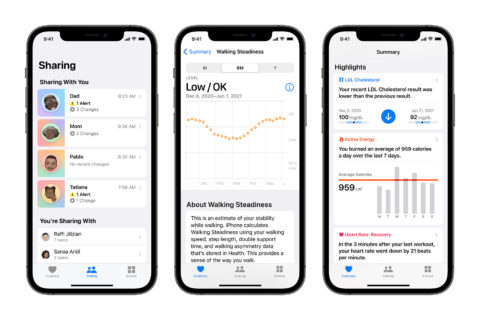
Keep people safe, by sharing Health data, if… you know the drill by now.
Keener on more entertainment? You’ll soon be able to ask Apple’s Siri to play something on your Apple-branded Apple TV using a pair of Apple HomePod minis as speakers, or use Apple’s AirPlay to mirror the display from your Apple iPhone or Apple iPad to your Apple iMac.
Of course, some people would run their eyes over this mammoth list of features and note that few of them are strictly new. There are already apps and services for sharing TV with people who are far away, methods to obfuscate internet traffic, and ways to copy text from images. But that criticism misses the point, because Apple is baking everything right in. It’s about seamlessness and a lack of friction. It’s about differentiating technology by emphasizing its human nature – or at least the clear benefits to the humans using it rather than becoming giddy about the tech in and of itself.
Tickets, please
Most of all, Apple’s strategy is about adding value. We hear a lot about Apple’s ‘walled garden,’ but an oft-used metaphor of late is that the Apple ecosystem is more like a theme park: controlled and contained, and with a coherently designed experience. When you’re there, engaged and having fun, you see no reason to leave.
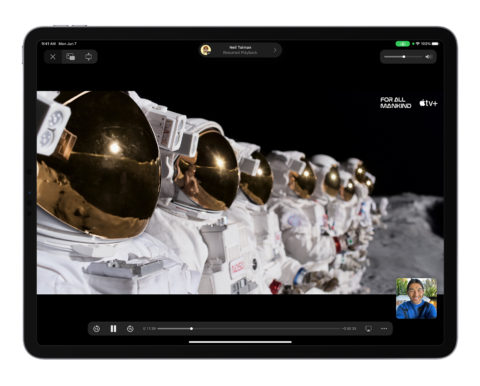
Hey, tiny thumbnail guy, no spoilers when using SharePlay!
Although you could enjoy similar treats in a range of other locations, the experience would in many cases be objectively worse, and it’d be an awful lot more fragmented – which all sounds like a hassle. However, like a theme park, Apple is expensive – and to get the best experience of all, you need to go all-in with the multipass premium ticket.
That’s the choice Apple users make. It’s a roller-coaster ride that can leave you with a grin – but at the expense of your wallet taking a bit of a kicking.
